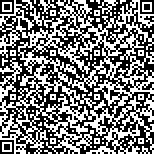下载中心
优秀审稿专家
优秀论文
相关链接
摘要

在利用NOAA数据提取水稻种植面积的过程中,由于其地面分辨率较低,存在大量混合像元问题,使得提取精度不够理想,该文基于神经网络方法即可以提供多源数据的输入,又不受数据分布假设限制的特点,从NOAA图像演算最能反应朋稻分布信息的绿度指数(NDVI)和日夜温差值,将其重采样,然后加入对水稻生产区域有重要影响的土壤类型,土地利用类型及高程分布等信息,以TM图像作为准直值进行分类,获得较为理想的湖北省双季早稻种植面积。
Rice is one of the main grain crops in our country. The rice planting area and yield could affect argicultural development and economic stability in China. For NOAA has a lower spatial resolution, the result is that most AVHRR pixels contain a mixture of land cover classes which influence the accuracy of classification. Methods for unmixing the mixed pixels have been used in a range of studies and the accuracy of the analyses has often increased. However, there are many problems in these methods. For instance, because sometimes the same objects have different spectra, or the same spectra represents different objects, so identifying the land cover classes successfully is very difficult by only relying on spectra data and obtaining end member spectra is another problem. In this paper, an alternative approach, the artificial neural network which makes no assumption about the nature of the mixing and does not require end member spectra, is presented. We select five factors (NDVI, temperature difference, soil type, landuse type and DEM), which have important effect on the distribution of rice planting, as the nodes of input layer to classify the image. The planting areas of early rice in Hubei province are obtained.

